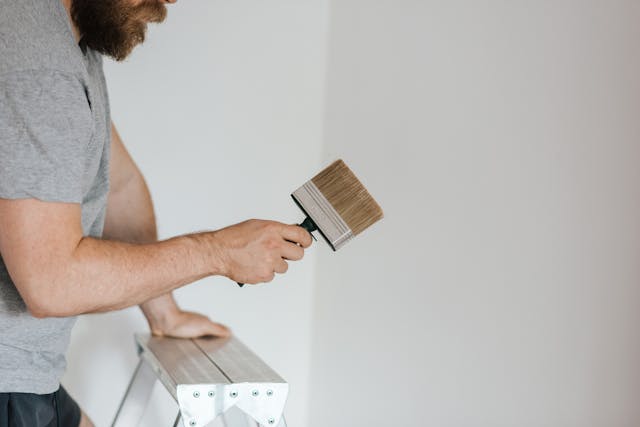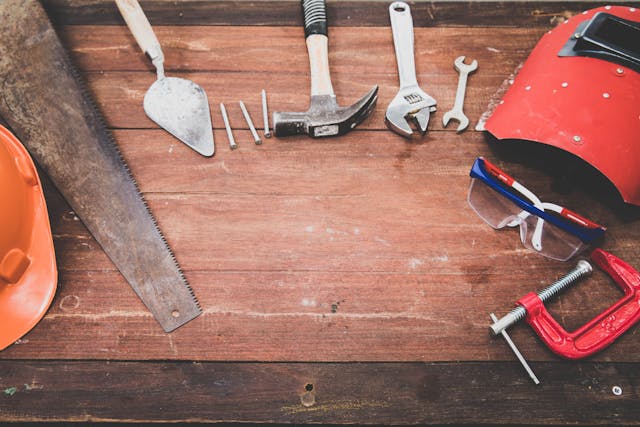Key Takeaways
Proactive Maintenance: Regular upkeep protects your property’s value, prevents expensive repairs, and keeps rental income steady.
Climate Challenges: Florida landlords must address humidity, storms, and salt air to avoid accelerated wear and damage.
Inspections & Seasonal Care: Routine checkups and seasonal maintenance help identify issues early and extend the life of property systems.
Vendor Partnerships: Working with trusted local vendors ensures timely, high-quality repairs and long-term cost savings.
Maintaining your rented house is one of the most important responsibilities of being a successful landlord.
Regular upkeep not only keeps the home safe and comfortable for tenants but also protects its long-term value and ensures steady rental income.
For property owners in Sarasota and Manatee Counties, unique challenges like high humidity, tropical storms, and salt air make proactive maintenance even more critical.
In this guide from Gulf Income Properties, we’ll cover effective ways to stay on top of rental property maintenance so you can avoid costly repairs, extend the life of your property, and keep your tenants satisfied!
The Role of Climate in Rental Property Maintenance
The Gulf Coast region is beautiful, but its climate poses special challenges for rental properties. Heat, humidity, tropical storms, salt air, and heavy rainfall all take their toll.
Moisture can lead to mold, rot, rust, and deterioration of materials. Salt air accelerates corrosion of metal fixtures and HVAC components.
Strong sun fades roofs, siding, paint, and causes wear. Along with this wind and storms increase the risk of roof damage, broken windows, and flooding.
Because of this, your maintenance plan must include:
Frequent inspection of roofing, gutters, and downspouts to ensure water is channeled properly;
Regular checks of exterior paint, trim, and siding to prevent decay or water intrusion;
HVAC unit servicing more often than in dry, mild climates, especially filters, coils, and seals;
Preventive pest control (termites, rodents, insects) as warm and wet conditions favor infestation;
Moisture control inside units (ventilation, sealing around windows/doors, maintaining seals).

Understanding your location’s weather patterns helps you catch problems early, before they become structural or safety issues.
Regular Inspections and Preventive Maintenance
Without waiting for tenants to report problems, adopt a proactive inspection schedule. Ideally, you need to conduct at least four inspections per year. These checkups help uncover small issues before they escalate.
Key areas to inspect:
Roof, Gutters, Downspouts, and Drainage Systems: Make sure nothing is loose or clogged.
Exterior Surfaces: paint, siding, decks, windows, doors. Look for rot, peeling paint, wood damage, or cracked seals.
Interior Plumbing: leaks, water stains, drains and backs up, hot water heaters.
Electrical Systems: outlets, lighting, switches, smoke detectors.
HVAC Systems: filters, ductwork, outdoor units, condensers.
Safety Features: fire alarms, carbon monoxide detectors, locks, railings.
Landscaping & Grounds: ensures grading slopes away from buildings, trees trimmed away from siding and roof, mitigate erosion, prevent standing water.
Preventive maintenance programs reduce long-term costs.
By scheduling maintenance with trusted vendors, using durable materials, and staying ahead of wear-and-tear, you extend the life of major assets, including roofing, HVAC, and appliances.
Seasonal Maintenance Tasks
Seasonal care matters especially in Florida. The changing seasons bring different stressors to your property.
Before summer check air conditioning systems; clean filters, service units, inspect insulation. Inspect storm shutters, windows, doors for proper sealing. Evaluate roofing and exterior paint that may have been weakened.

During hurricane season (roughly June to November) ensure roofing and flashings are secure; trees are trimmed; gutters cleared; property insurance policy up to date; emergency supplies and safety features functional.
During the dry season’s end inspect for issues caused by drought or heat, wood drying out, soil settlement around foundations, cracks in exterior.
After heavy rains or storms check for leaks, flashing problems, foundation drainage, gutter functionality, mold growth, possible damage to exterior surfaces.
Maintaining Interior Components for Habitability
Tenants expect comfort, safety, and functionality. Keeping interiors in good shape protects your reputation as a landlord and reduces tenant turnover.
Focus on:
Kitchen and Bathroom Fixtures: faucets, sinks, tubs, toilets. Small leaks can damage flooring or drywall.
Appliances: regular maintenance of refrigerators, stoves, dishwashers; replace aging units before they fail completely.
Flooring and Walls: fix water damage, repaint when needed, repair or replace worn carpets or flooring.
Lighting and Electrical: ensure switches and outlets work; replace faulty fixtures; upgrade unsafe wiring.
Windows and Doors: weather-stripping, caulking, sealing to reduce drafts and moisture intrusion.
Safety Items: smoke detectors, carbon monoxide detectors, and fire extinguishers.
Tenant Communication & Responsibility
Tenants can be your eyes and ears for many issues, but communication must be clear.
From move-in, set expectations: what the tenant handles (e.g. keeping gutters clear of leaves, reporting leaks quickly, changing filters, etc.), and what the landlord or property manager will cover.
Make it easy for them to report maintenance issues: phone, app, portal, or email. Respond timely. Document requests and work done.

Transparency builds trust and encourages tenants to stay longer. Also inspect at move-out, document the condition, and address damage quickly so the property is still market-ready.
When to Repair vs Replace Rental Property Systems
Sometimes a repair is enough; sometimes replacement is better in the long run. If an appliance or system is old and repeatedly failing, replacement may be more cost-efficient.
Using better materials up front (like more durable roofing, corrosion‐resistant metal, energy-efficient HVAC) costs more initially.
Though this often saves money by reducing maintenance, lowering energy bills, and improving tenant satisfaction.
Legal, Safety, and Regulatory Compliance
Make sure you adhere to all local building codes, health and safety standards, landlord-tenant laws, and any HOA or municipal requirements in Sarasota / Manatee County.
That includes inspections where needed, safety devices (smoke detectors, etc.), property insurance, etc. Noncompliance can lead to fines, liability, or loss of tenants.
Regular inspections and professional contractors help ensure compliance.
Work with Quality Vendors and Professionals
Choose contractors, electricians, plumbers, pest control, etc., that are licensed, insured, experienced in local conditions.
Having established relationships with reliable vendors gives you faster response times, better pricing, and higher quality work.
Keep a vendor list with contact info, rates, turnaround times. Having preferred vendors streamlines maintenance, especially in emergencies.
Bottom Line
It’s easy to think of maintenance as a cost, but in reality, it’s an investment in the future of your rental property.
Every repair, inspection, and preventive measure helps preserve value, prevent costly emergencies, and create a safe, comfortable home for your residents.
A well-maintained property attracts quality tenants, commands higher rental rates, and generates steady income. And when it comes time to sell, homes with a proven record of care often sell faster and at stronger prices.
If you want to protect your property and grow its long-term value, having the right partner makes all the difference. Gulf Income Properties specializes in helping owners across Sarasota and Manatee Counties.
Contact us today to learn how our team can safeguard your investment and maximize your rental income.


